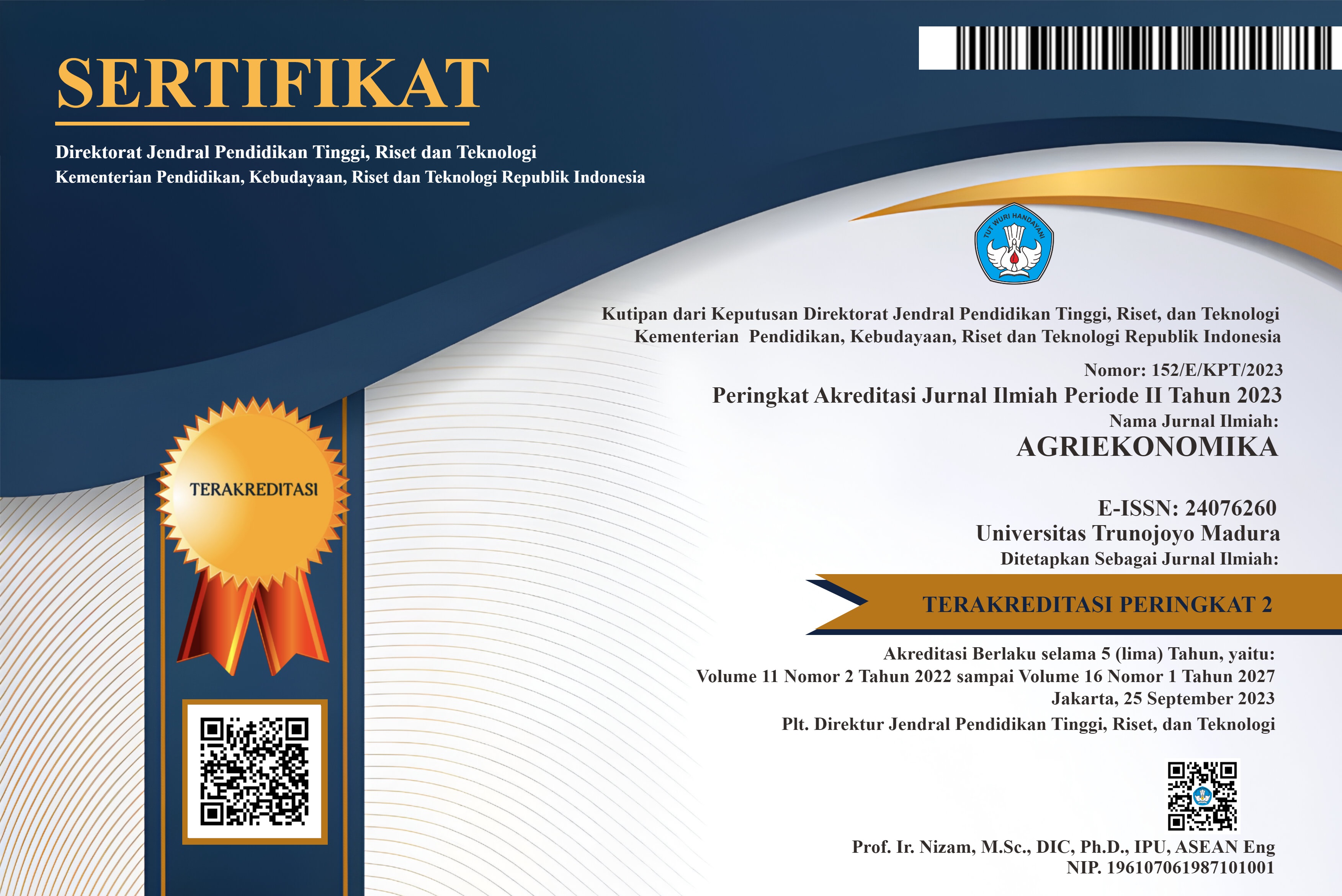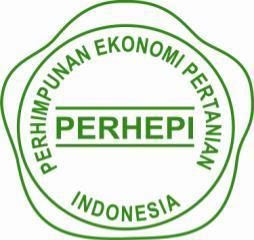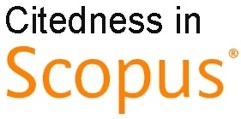Mapping Analysis of Leading Commodities Based on Food Crops in Malaka Regency
Abstract
Malaka Regency is export-oriented food storage in the border area, requiring a complete database to distribute its agricultural potential. However, problems are still found in agricultural development such as limited infrastructure, low human resources, access to farmer institutions, finance and markets. However, the development of the agricultural sector is slowly being forgotten because it is often considered a supporting element in the economy. Apart from that, the development of the agricultural sector is slowly being forgotten because it is often considered a supporting element in the economy. So this study aims to identify developments in each food crop commodity. In addition, the identification of opportunities for commodity development areas will be carried out by mapping the potential of each food crop commodity. The analysis used in this research is Location Quotient (LQ) analysis, Locational Index (LI) analysis, and Specialization index (SI) analysis. The results of this analysis indicate that the development of rice commodities is centered in the districts of Central Malaka, West Malaka, and Weliman. Corn commodity is centered in Wewiku, Weliman, Rinhat, Kobalima, East Malaka, and East Kobalima District. The cassava commodity is the basis for Rinhat, Lokufeu, Laenmanen, and Botin Leobele Districts. Sweet potato commodity base in Rinhat District, Sasitamean, Botin Leobele, East Malaka, East Kobalima. Mung bean commodity base in Central Malaka, Kobalima, East Kobalima District. The peanut commodity is essential in Wewiku, Kobalima, and East Kobalima District.
Keywords
Full Text:
PDFReferences
Ali, T. (2019). Analysis of Base Sector and Non-Basic Sectors on Economic Growth in Maluku Province (Case Study of City Districts. Jurnal Cita Ekonomika, 13(1), 1–18.
Arifin Bustanul. (2005). Agricultural development: policy paradigms and revitalization strategies.
Asa, A. T. (2018). Factors Influencing Peanut Farming Production in Tapenpah Village, Insana District, North Central Timor Regency. Agrimor, 3(1), 1–3.
Bank Indonesia. (2021). Indonesian Economic Report.
Budiman, H. (2012). Cultivation, Corn Varieties, organic. Increasingly New Hunted. Pustaka Baru Putra. Yogyakarta.
Dian Adi Anggraeni Elisabeth. (2021). Competitiveness Capability of Mung Beans at the Farming Level on Saline Land (Case Study in Gesik Harjo Village, Palang District, Tuban Regency). BULETIN PALAWIJA, 19(2), 93–101.
Grand Design One Village One Product Jalan menuju Revolusi Pertanian Malaka. (2016). Lembaga Penelitian Universitas Nusa Cendana kerja sama dengan Pemerintah Kabupaten Malaka.
Hastuti DP, Supriyono, H. S. (2018). Growth and the yield of mung bean (Vigna radiata L.) in several doses of organic fertilizer and planting density. Journal of Sustainable Agriculture, 33(2), 89–95. DOI: https://doi.org/10.20961/carakatani.v33i2.20412
Isbah Ufira, I. R. Y. (2016). ANALISIS PERAN SEKTOR PERTANIAN DI PROVINSI RIAU. Jurnal Sosial Ekonomi Pembangunan, 7(19), 45–54.
Kementrian Pertanian Republik Indonesia. (2020). Ministry of Agriculture strategic plan.
Khatimah Khusnul, M. S. (2022). Kontribusi sektor pertanian terhadap perekonomian Kabupaten Brebes. Jurnal Inovaasi Penelitian, 2(10), 3287–3296. DOI: https://doi.org/10.47492/jip.v2i10.1170
Klau, Anggelina Delviana, and U. H. (2021). Analysis of economic potential to increase competitiveness in East Nusa Tenggara Border area. Jurnal Ekonomi Pembangunan, 3(3), 13–26. DOI: https://doi.org/10.32938/jep.v6i3.1340
Klau, A. D., Rustiadi, E., & Siregar, H. (2019). Analisis Pengembangan Kawasan Agropolitan Berbasis Tanaman Pangan di Kabupaten Malaka Provinsi Nusa Tenggara Timur, 3(3), 172–179. doi: 10.51125/citaekonomika.v13i1.2647
Marinda Ranti, Sitorus Santun R, P, P. D. O. (2020). Analisis pola spasial persebaran kawasan lahan pertanian pangan berkelanjutan di Kabupaten Karawang. Jurnal Geografi, 12(2). https://doi.org/DOI: 10.24114/jg.v12i02.17646
Menge, Dominika, and Y. L. S. (2016). Appearance of Local Corn and Its Role as a Main Food Source for People in the Dry Land of East Nusa Tenggara. Balai Pengkajian Teknologi Pertanian Nusa Tenggara Timur.
Muta’ali, L. (2015). Teknik Analisis Regional untuk Perencanaan Wilayah dan Lingkungan. Yogyakarta: Badan penerbit fakultas geografi (BPFG).
Niis Matilde, S. and N. (2019). Policy of Impact “Revolusi Pertanian Malaka” Toward Economy Productivity The Kabupaten Malaka Community NTT. Jurnal Agribisnis Perikanan, 12(1), 43–50. DOI:10.29239/j.agrikan.12.1.43-50
Pah Kurniati. (2016). GENDER RELATIONS IN DISASTER IN MALAKA DISTRICT, EAST NUSA TENGGARA. Jurnal Kajian Ilmu Administrasi Negara, 4(2), 163–180. DOI; 10.21831/jnp.v4i2.12624
Pribadi Didit Okta, Rustiadi Ernan, Panuju Dyah Retno, P. A. E. (2018). Regional Development Planning modeling. Bogor: Crestpent Press.
Saharuddin S. (2005). The Influence of Economic Development on APBD Revenues and People’s Welfare in the South Sulawesi Region. Program Pascasarjana UNHAS.
Suharyon and Safri Edi. (2020). Potentials and Opportunities for Development of Sweet Potato Commodities in Kerinci Regency, Jambi Province. Jurnal Sains Sosio Humaniora, 4(2). DOI:10.22437/ppd.v11i1.23631
Swastika, D. K. S. (2016). RESPONSE OF PEANUT (Arachis hypogaea L) ON GIVING OF MICRO ELEMENTS. Monograf Balitkabi, 13(1).
Tetik, Adiyanti Hoar, and Y. M. F. (2016). Analysis of mung bean farming income in Wewiku District, Malacca Regency. Agrimor, 1(3), 43–54. DOI ; 1032938/ag.v8i3
Yamali, F. R., & Putri, R. N. (2020). Dampak Covid-19 Terhadap Ekonomi Indonesia, 4(September), 384–388. https://doi.org/10.33087/ekonomis.v4i2.179
DOI: https://doi.org/10.21107/agriekonomika.v12i2.18785
Refbacks
- There are currently no refbacks.







